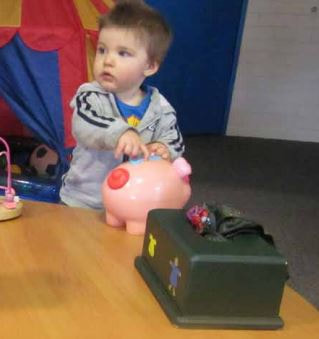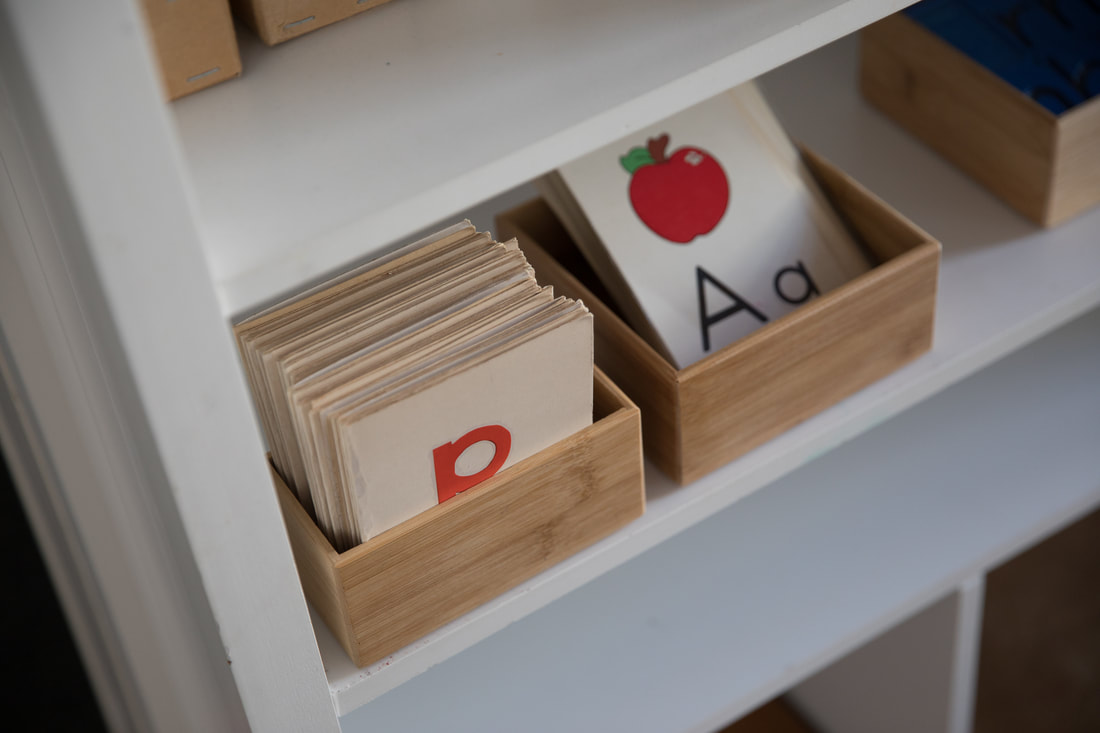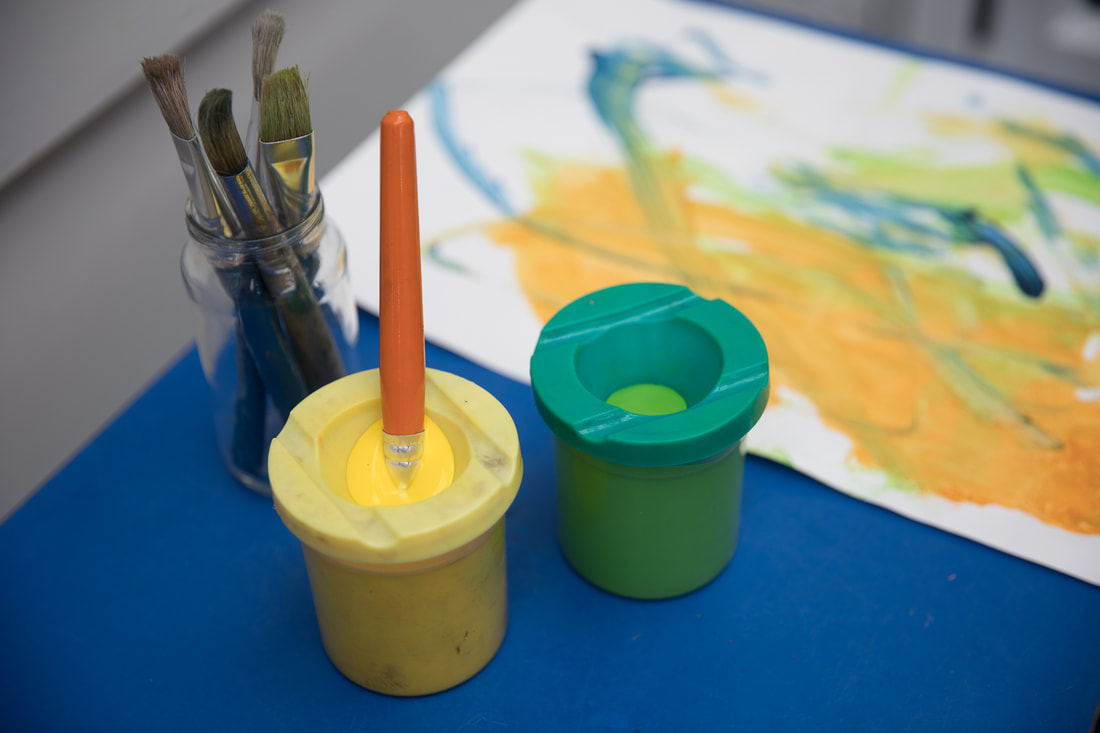Kids' Kampus
 Reporting instances of biting is never easy, and the news can be shocking for the parents of both the biter and the bitten. As all educators understand, biting is a natural developmental stage for many young children aged 1-3 years old and the causes and motivations can vary significantly. It's important to take a whole-of-service approach to managing children who bite and to try not to become angry or frustrated. The Early Childhood Research Hub has compiled a comprehensive resource describing the most common causes of biting as well as a range of positive responses educators can employ to address the problem. Teething Cause of biting: If the child has teeth coming through, they may be in pain and applying pressure to the gums through biting may be soothing. Possible response: Provide something to bite on to comfort the child such as teething toys or a folded cold face washer. Consider the child’s age as older toddlers may be able to bite on harder foods such as apples. Some parents may provide gels, but only use these with parents’ approval and be aware of your policy on administering medication if pain relief is required. Oral muscle development Cause of biting: As their muscles develop, toddlers experiment with two opposite ways of dealing with things: holding on and letting go. This theme is repeated in such things as separation from parents, toilet training, and learning to share. They do the same "hold on/let go" with their facial muscles. Biting is an example of "holding on" and is developmentally part of gaining control of a muscle group or cognitive activity. Possible response: Help toddlers learn to hold on/let go by demonstrating and exploring holding on/letting go with activities like blocks in containers or nesting cups. Structure the environment to ensure opportunities to practice fine and gross motor skills. Structure activities and games to hold on/let go such as holding onto a ball or parcel then letting go (modified pass the parcel), holding hands and letting go, physical freeze and move games (statues). Developing independence Cause of biting: Toddlers are gaining a sense of autonomy by doing things for themselves, making choices, trying to control their world and making demands on adults and other children. Biting is a way of demonstrating independence or getting control and power over others. Possible response: Offer toddlers independence as well as consistent, loving and firm limits. Allow children to make choices, for very young children restrict the choice between two items, and express preferences. Have clear limits but set up the environment to support exploration and learning. Set achievable tasks – allow children to succeed and use lots of verbal encouragement. Language and communication Cause of biting: Toddlers are in the early stages of language development. For children who cannot yet talk, biting is their alternative. It is often a "physical" rather than expressive communication, a language alternative. Possible response: Encourage children to develop language skills. Use routine times such as nappy change for one-on-one exchanges by teaching words or sounds and signals, making eye contact and use non-verbal communication, body language and signs to re-enforce words. Plan activities with a verbal component such as stories, finger plays, and songs. Encourage all attempts at expressive language and be aware of the sounds they use to name objects. Learning cause and effect Cause of biting: Toddlers begin to explore and learn the relationship between cause and effect from the time they are about 12 months old. Biting is a great cause and effect demonstration. A bite reliably elicits a loud scream or reaction from another child and a reaction from an educator. Possible response: Provide alternative ways for the child to observe and explore the relationship between cause and effect. Use toys that require action to cause a reaction like figures that pop up, cash register, pull along toys. Offer open-ended activities such as sand, water, painting, blocks and crayons so the child can "make something happen" and acknowledge and describe this process. Excitement and overstimulation Cause of biting: Children can have such a great time running around and enjoying the environment that they become over-excited and overstimulated. Overstimulation can also occur if the visual environment is too colourful or "overloaded". Biting can be a form of tension release in such instances. strong>Possible response: Plan a balanced day with some quiet time/privacy/space as well as outdoor play times. Help children with the transition from physical play to quieter activities. Use routine and repetition to have a calming effect. Try smaller groups. Consider soothing and relaxing music and incorporate relaxation activities with older children. Under-stimulation and boredom Cause of biting: If the curriculum is inadequate or insufficiently stimulating, or doesn't reflect their interests, children may bite due to boredom… anything to get a reaction and break the monotony! Possible response: Reflect on your curriculum and your environment. Make it balanced, interesting and build on the strengths and interests of each child. Eliminate waiting and queuing where possible and ensure the physical environment is engaging and that all toys and equipment, particularly favourites, are available to children so they are not put away or unavailable to them. Frustration Cause of biting: Even in a quality setting, children may be frustrated for a many reasons, such as too many challenges, too many children, too little or too much room, not enough one-on-one attention, or too many competing demands. Frustration may result from unmet needs, inability to communicate or inconsistent or unclear limits. Children may bite through frustration when their more legitimate/positive attempts to alleviate their frustrations have been unsuccessful. Possible response: Model appropriate ways of dealing with frustration by intentionally teaching them to use verbal skills and express feelings and encourage all attempts to do so. "Feelings" faces can be useful too. Maintain consistent known limits and use positive behaviour guidance. Teach turn taking (my turn, your turn). Ensure daily one-on-one time with each child. Reflect on your curriculum and environment, opt for small groups where possible and break the room up into smaller spaces. Seeking attention Cause of biting: The young child may bite to get attention from parents or educators. Some children need more attention than others and don’t care if this attention is positive or negative. Behaviours such as biting, scratching and hair pulling can be their way of being noticed and get an immediate reaction from adults. Some children may receive more negative than positive attention thereby unintentionally, reinforcing their behaviour. Possible response: Ensure they receive regular positive, warm, nurturing, one-on-one attention. Use routines and transitions and don't provide undue attention to the child when they bite. Be aware of and verbally acknowledge positive, busy, curious, helpful, and productive behaviours. Encourage the intent of the behaviour as toddlers don't always get it right! Remember to notice the quiet child too. Lack of impulse control Cause of biting: Generally, toddlers lack the ability to evaluate the consequences of their actions and may act on impulse. They can appear quite surprised at the result of their actions. Sometimes they bite just because there is something to bite. Possible response: Ensure that all educators respond to biting in a consistent way that discourages the behaviour, yet is not punitive, such as "Don't bite. Biting hurts." Ensure your response doesn't give excessive attention to the biting child and unintentionally strengthen the behaviour. Model alternate behaviours and teach them how to respond to a potential bite with a verbal and physical response. Say: "stop, that hurts" and indicate stop with their hand. Exploration Cause of biting: Biting is a form of oral sensory-motor exploration. Biting can be part of a child's way of exploring the world in the same way that they may like to look, smell, touch and listen. It helps them learn about their world. Very young children go through a stage of exploring everything with their mouth. Possible response: Provide lots of sensory experiences with a variety of surface textures such as hard, soft, rough, and smooth. Have many oral activities – teething ring, soft toys, and blocks. Explore cooking through taste, texture, colour and temperature. Social interaction Cause of biting: Toddlers are learning to interact with their peers and how to approach other children. They often show interest by biting, pulling hair or pushing. This physical communication is particularly common in pre-verbal children. Infants relating in this way usually don't understand that they are hurting others – although older toddlers may! Possible response: Model appropriate interaction. Teach children words to help them interact. Teach and model joining skills for older toddlers. Ensure sufficient material and equipment, including duplicates, to enable parallel play. Encourage and re-enforce parallel play. Introduce activities such as songs, games, and finger-play with handholding, buddy pairs and introductions. Encourage appropriate social interaction including sharing toys, hugging, smiling. Anxiety Cause of biting: Young children often use biting as a way to communicate or release feelings of anxiety, pent-up emotion, tension or insecurity. It may be in response to the stress around them, either at home or in the care environment. Ask parents if there have been any changes at home or in routines, such as recently weaned from the bottle or a new baby at home. Possible response: Ensure one-on-one time to determine the source of the anxiety and collaborate with parents. Allow a comforter from home or create a comforter in your setting. Provide relaxing and soothing activities such as water, sand play, soft music, favourite lullabies and quiet songs. Provide calming contact with educators. Try massage or aromatherapy. Keep things predictable so the child feels safe and secure. Encourage attachment. Imitation Cause of biting: Babies and toddlers learn by imitating others and biting is a behaviour often learned in this way. From around 18 months toddlers can observe behaviour, store it in their memory and perform the act later. This is called deferred imitation. Possible response: Model positive interactions with children and toddlers. Ensure that your verbal and non-verbal behaviour is consistent, loving, nurturing, respectful and appropriate for young children to copy. Use positive behaviour guidance, such as intervention and redirection, active listening and reflecting, regular but sincere encouragement. Notice and encourage pro-social behaviours. Hunger Cause of biting: A young child may bite simply because they are hungry. Possible response: Ensure that the menu provides adequate and nutritious meals consistent with Ministry of Health dietary recommendations for children. Check that the child actually eats at meal and snack times and ask the family about home diet and breakfast consumption. Ensure that water is freely available and provide an additional portion at mealtimes if necessary. Reprint from careforkids.co.nz
1 Comment
 The term “child development”, refers to the changes that occur as a child starts to grow and develop, in terms of their physical health and wellbeing, their social awareness, being mentally alert as well as emotionally sound - and ready to learn. It is now recognised that the formative years of a child’s life between 0-8 years are the most crucial time for learning. This is a period of a rapid cognitive, social, emotional and physical growth; in fact, children learn much quicker during their early years than they do at any other stage of life. With recent research showing that the first five years are of even greater importance for the development of the child's brain, it’s clear that these moments are critical, providing the base for the brain's organisational development and functioning, later in life. With that in mind, it’s essential that parents and carers note their role in educating children during their formative years. This is important when it comes to deepening and extending the knowledge, understanding, values and skills that they already have. Read on to learn more from Kids’ Kampus. 5 highly effective play and experiential learning activities: It’s vital that children are given the opportunity to participate in new and engaging activities, such as exploring art, role play, music, literature, problem solving and more. Dress up & role play: This helps children to begin to understand aspects of the adult world, such as job roles and interest. This also boosts social interaction and encourages them to dress themselves – an important aspect of growing up. Art: Giving kids the opportunity to get creative with paints and drawing tools allows them to experience the world in a sensory manner by developing a level of self-expression. This also helps to develop their pre-writing skills. Problem solving: Utilising tools such as blocks, jigsaws and shape sorters lays the fundamentals of problem solving, spatial thinking, logical reasoning, ordering, and recognising different shapes, sizes, and colours. Sensory play: This refers to any activity that involves touch, smell, taste, sight and hearing. From plates of jelly and play dough to aqua beads and even ice, sensory play stimulates exploration and lays the foundations of science and investigation. Cooking/ Pretend-Cooking: Playing chef is a brilliant play scenario for children, as it combines the basics of sensory play, mathematical concepts, safety and even following processes. Here at Kids’ Kampus, we believe that your little ones deserve the very best out of life. That’s why we work in partnership with all of our families in order realise the full potential of every child by creating a homely, nurturing, safe and stimulating environment. If you’re interested in learning more about our childcare centre, contact us online or give us a call on (09) 630 1454. |
.Margie Blackwood, owner and Director of Kids' Kampus
April 2024
. |
|
Kids’ Kampus Childcare
50-52 Shackleton Road Mt Eden, Auckland 1024 New Zealand |
|









